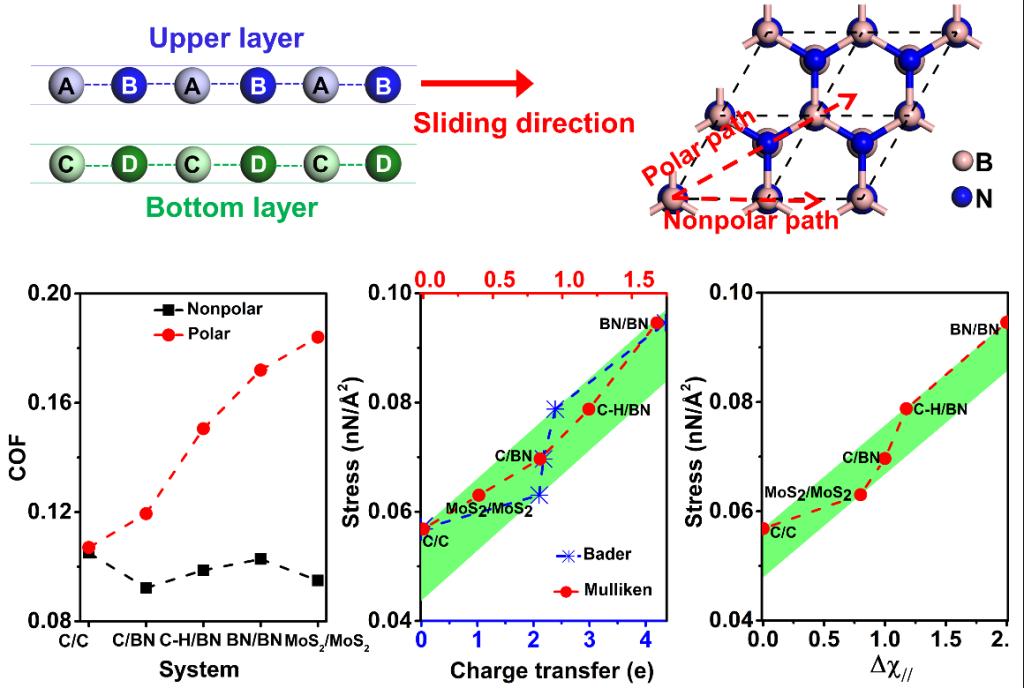School of Science has made important research progress in the field of nano friction
Recently, Associate Professor Wang Jianjun from the School of Science, Professor Jia Yu from Henan University, and Professor BoNJ Persson from the Jülich Research Center of the German Helmholtz Association have made important research progress in the origin of nano-friction. The research results are titled "Dependency of sliding friction for two-dimensional systems on electronegativity" and published in Physical Review B, a mainstream journal of condensed matter physics (link to the paper: https://doi.org/10.1103/PhysRevB.105.165431). Associate Professor Wang Jianjun from the School of Science is the first author of the paper, and Zhongyuan Institute of Technology is the first unit of the paper.
Studying the origin of friction is of great significance for controlling friction and saving energy and resources. Although people have studied friction down to the atomic and molecular scale, the understanding of the origin of friction is still very limited. Nano-friction is closely related to the charge distribution of the sliding interface. In previous studies, Dr. Wang Jianjun et al. proposed the roughness mechanism of charge distribution in nano-friction (Tribology Letters, 2012, 48 (2): 255-261; Tribology Letters, 2014, 55(3): 405-412), at the same time, it provides a method to regulate interfacial nanofriction through surface modification, external electric field, doping, etc. (Tribology International, 2015, 86: 85-90; Tribology Letters, 2016, 61(1 ): 4-9), has been widely recognized in the field.

Figure: Scaling laws for friction coefficient and electronegativity in low-dimensional systems
In this study, based on the comparative analysis of nano-friction phenomena between layers of five typical two-dimensional materials, Dr. Wang Jianjun proposed the concept of "electronegative friction" for the first time, and gave the change of nano-friction force with surface electronegativity. linear scaling law. They found that the magnitude of the friction between low-dimensional systems depends largely on the difference in electronegativity between the constituent atoms of the material. During sliding, non-polar paths with constant electronegativity difference or zero electronegativity The magnitude of the upper friction force is almost constant, regardless of the material and surface structure; on the contrary, the friction force on the polar path is proportional to the electronegativity difference between the constituent atoms, and follows the linear scaling law (as shown in the figure). From the perspective of physical origin, the difference in electronegativity can induce the localization of charges to the vicinity of atoms with high electronegativity, increase the roughness of charge distribution, and then increase the sliding barrier and friction, which is the main mechanism of electronegativity friction. This study further enriches the charge distribution roughness mechanism of friction, which can provide a reference for the prediction of nano-friction of low-dimensional materials, and also provides a strategy for the design of tribological properties of nano-devices.
This work was supported by the National Natural Science Foundation of China and the Natural Science Foundation of Zhongyuan Institute of Technology.
(Zhang Jianlin, School of Science)


